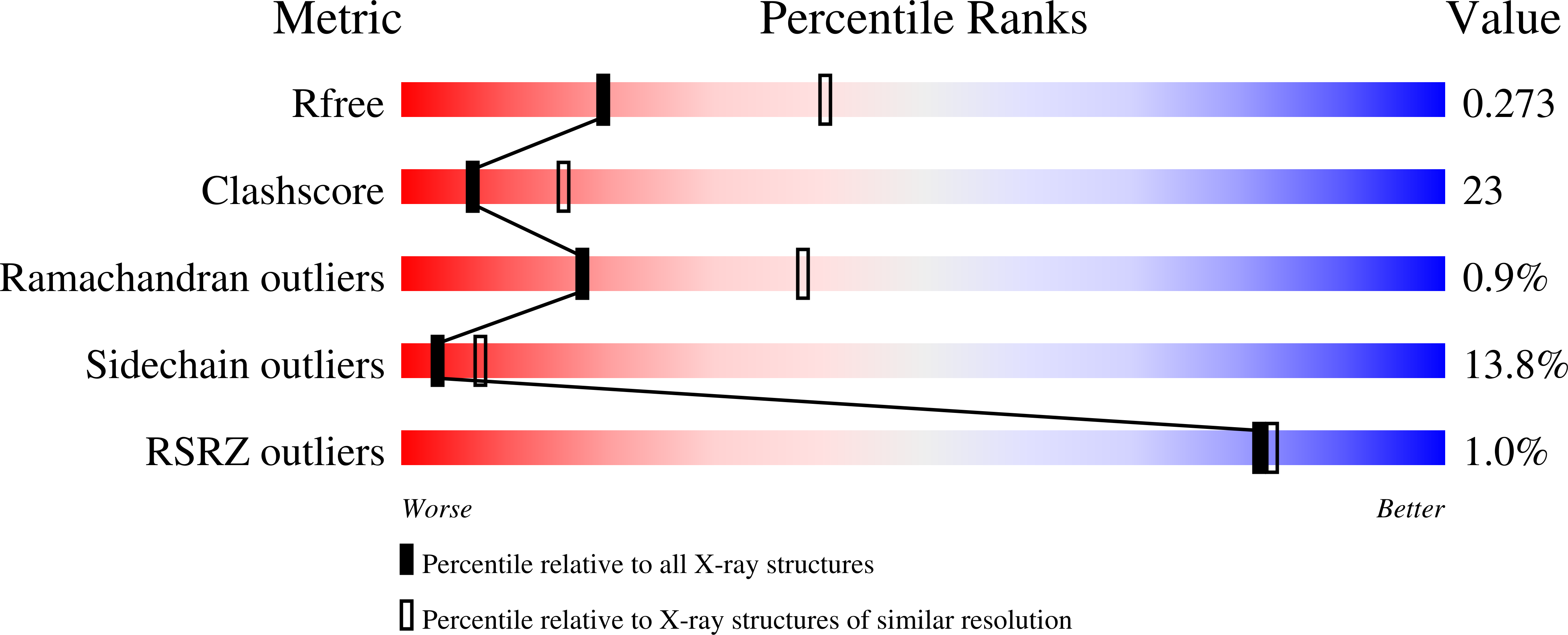The Enzymology of alanine aminotransferase (AlaAT) isoforms from Hordeum vulgare and other organisms, and the HvAlaAT crystal structure.
Duff, S.M., Rydel, T.J., McClerren, A.L., Zhang, W., Li, J.Y., Sturman, E.J., Halls, C., Chen, S., Zeng, J., Peng, J., Kretzler, C.N., Evdokimov, A.(2012) Arch Biochem Biophys 528: 90-101
- PubMed: 22750542
- DOI: https://doi.org/10.1016/j.abb.2012.06.006
- Primary Citation of Related Structures:
3TCM - PubMed Abstract:
In this paper we describe the expression, purification, kinetics and biophysical characterization of alanine aminotransferase (AlaAT) from the barley plant (Hordeum vulgare). This dimeric PLP-dependent enzyme is a pivotal element of several key metabolic pathways from nitrogen assimilation to carbon metabolism, and its introduction into transgenic plants results in increased yield. The enzyme exhibits a bi-bi ping-pong reaction mechanism with a K(m) for alanine, 2-oxoglutarate, glutamate and pyruvate of 3.8, 0.3, 0.8 and 0.2 mM, respectively. Barley AlaAT catalyzes the forward (alanine-forming) reaction with a k(cat) of 25.6 s(-1), the reverse (glutamate-forming) reaction with k(cat) of 12.1 s(-1) and an equilibrium constant of ~0.5. The enzyme is also able to utilize aspartate and oxaloacetate with ~10% efficiency as compared to the native substrates, which makes it much more specific than related bacterial/archaeal enzymes (that also have lower K(m) values). We have crystallized barley AlaAT in complex with PLP and l-cycloserine and solved the structure of this complex at 2.7 Å resolution. This is the first example of a plant AlaAT structure, and it reveals a canonical aminotransferase fold similar to structures of the Thermotoga maritima, Pyrococcus furiosus, and human enzymes. This structure bridges our structural understanding of AlaAT mechanism between three kingdoms of life and allows us to shed some light on the specifics of the catalysis performed by these proteins.
Organizational Affiliation:
Monsanto Company, 700 Chesterfield Parkway West, Chesterfield, MO 63017, USA. [email protected]















